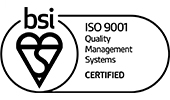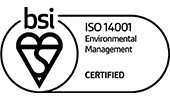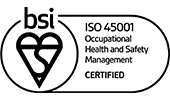There’s nothing worse than being bunged up from an allergy, especially when you have a long day of meetings, conferences and a mountain of paperwork to catch up on. Furthermore, allergies can have a huge effect on your office productivity.
Whilst “I can’t come into work, I’m allergic to the office” is the grown-up equivalent to “the dog ate my homework”, a surprising number of allergy sufferers find that their workplaces do have a negative impact on their symptoms. In fact, Allergy UK conducted some research a few years back that showed that up to 42% of allergy sufferers took time off work because of their allergy symptoms. With this in mind, more and more employers are taking steps to ensure that their offices are allergen-free zones. Here are a few simple things you can do in your office to minimise the presence of allergy irritants:
Clearing the clutter
That pile of paperwork may make you look like a busy worker, but it’s also a breeding ground for dust and particle irritants. At the end of each week, take a few minutes to tidy up your desk by recycling any unneeded paperwork. Also, make sure you wash up that coffee cup on your desk while you’re at it! Mold and bacteria will quickly build up on dirty dishes so it’s essential to regularly wash up to minimise allergy symptoms. Finally, make sure you clean your workstation regularly with unscented cleaning products.
Vital ventilation
Ventilation is vital. Ensure you have plenty of clean air circulating your office, however, if you have any hay fever sufferers; keep the windows closed in the early morning and also late afternoon when the pollen count is generally higher.
If you have a heating, ventilation and air conditioning (HVAC) unit installed in your workplace, you should have it serviced regularly to prevent the build up of allergens and potential irritants.
Fresh, clean air
Aside from being well ventilated, your workplace should have the proper humidity to minimise mold. If your ventilation is somewhat limited, use an air purifier to remove and reduce allergens such as pollen, dust particles and mold spores. They’re also a great alternative to opening the windows in hay fever season as they circulate clean, fresh air without running the risk of distributing pollen particles around your office.

Turn it off
Did you know that copy machines have a long-standing reputation for emitting ozone? Ozone can cause issues for employees who suffer with allergies and asthma so it’s good practice to turn these off when they’re not in use. Plus, you’ll be reducing your electric bills in the process; a double win! It’s also worth having copy machines in well-ventilated areas so the ozone doesn’t clog up the air in your office.
Keeping the outside in
Consider having a communal cloakroom so that coats and outerwear are kept away from working spaces. This means that any dust particles and allergens from the outside world won’t be released into the working environment.
Flawless flooring
It’s worth noting that carpets and soft furnishings can harbor dust mites, which are a common cause for allergies in the workplace. If you have a carpet over a concrete floor then it can trap moisture, which will allow mold spores to thrive and attract dust mites. Consider your flooring options carefully in the early stages of your office fit out.
Personal responsibility
Last but not least, it’s important that your employees also take some responsibility for their own symptoms and they should ensure that they’re taking the appropriate allergy medication.








